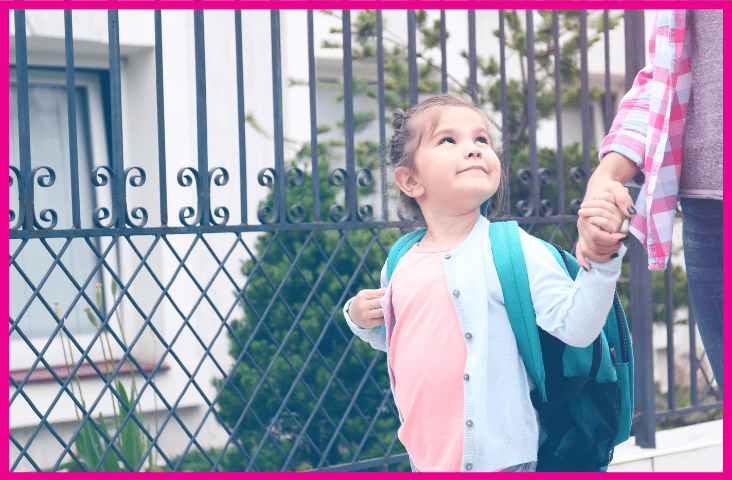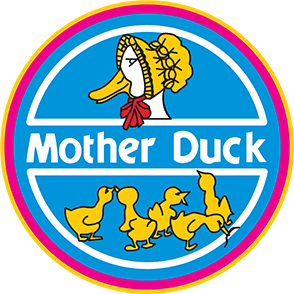
How To Help Your Child Transition To Child Care With Ease
Do you have a little one who struggles with transitions? Transitions can be difficult for all of us, but especially for young children. They can trigger anxiety and fear and sometimes result in aggression, tears, and meltdowns. They cause a lot of stress – for us grown-ups and for our kids too!
What exactly is a transition?
Transitions occur when we have to stop one activity to start another. Children transition from activity to activity all day long. Some transitions are small, like switching off the TV to eat dinner, packing away their toys at the end of the day, or moving inside to eat lunch.
And other transitions are larger. Going to sleep at night, moving from one place to another (like leaving the park or coming home from school), and leaving a special person (for example, grandma going home after a visit, saying goodbye to a friend after a playdate, or mum or dad leaving them in someone else’s care).

And of course, at this time of year, there are some HUGE transitions happening for children as they head back to childcare and school. Perhaps you have a little one starting childcare for the first time, returning to childcare after a break, moving into a new room with new teachers and care providers, or even starting big school!
These are difficult transitions for kids to make.
Why are transitions difficult for kids?
Quite simply, transitions are stressful for the brain. Our brains like predictability. To the brain, predictable = safe. So when we spring a transition on the brain, expecting it to shift focus quickly, it often interprets this as threatening.
Transitions also take a large amount of energy. Transitions usually require us to regulate ourselves as we move through arousal states. To go, for example, from high energy (running around outside) to lower energy (sitting on the mat during circle time).
And our children, with their still-developing brains, find this difficult. They simply don’t have the executive functioning skills required to do this alone. And they cannot self-regulate yet. Instead, they need the support from a safe adult to help make transitions easier.
How can I make transitions easier for my child?
When it comes to helping children navigate transitions, the key is to create a sense of safety and security for your child and their developing brain. You can do this by using the 4 Ps: Preparation, Planning, Practice and Promotion. Here’s how you can use these to help your child settle into their childcare or school routine this year.
1) Prepare
Start by preparing everything you need in advance. This will eliminate stress for you, and for your child. If you are running around searching for socks, your child’s hat, that sunscreen you know you had yesterday, or even your keys before you leave in the morning, you’re going to be frazzled and stressed out. Your child will feel that stress too.
And none of us are at our best when we feel stressed. You will be less present and available. You may snap or lose your cool, and you will possibly miss important cues from your child that indicate how they are feeling. You will miss opportunities to provide support and connect with your child. And that means you will miss opportunities to create safety when your child needs it most.

So gather everything you need the night before. Pack your child’s bag, lay out their clothes, and set your alarm. Then with the extra time you have in the morning, you can create a short connection ritual with your child before you leave the house – snuggle in bed for a few extra minutes, play a short game, or eat a yummy breakfast together. They will head off for the day feeling super loved up and connected to you!
Pro Tip: A transition item like a teddy, doll, or blanket, can help your child feel safe and secure while they are away from you. Items like this provide a bridge between home and childcare, helping your child feel connected to you even while you are apart. So if your child has an object from home that brings them comfort, be sure to pack it in their bag. And don’t forget to let your child’s teachers know that it’s there so they can encourage your child to use it throughout the day!
2. Plan
Plan ahead. Make sure your child understands the plan and knows exactly what to expect. Remember, brains love predictability and do not appreciate surprises. So be sure your child knows exactly what to expect by going over the plan with them, step by step.
Will they eat breakfast at home or at childcare? Who will drop them off at childcare? Which room will they go to and what will they do with their bag when you arrive? And most importantly, when will you be back to collect them? Very young children need reassurance that you will return, so be sure to include this information with a reference point they can understand.

It might sound like this: “When you wake up I will make you breakfast and we will sit down and eat together. I will help you brush your teeth and then we will get dressed. We can read two books together, and when the timer goes off it will be time to leave. Miss Taylor will be there to greet you and we will put your bag in your cubby. Then mummy will give you a kiss and a hug and go to work. I will be back to get you after a late snack.”
And if the plan changes, try to give your child plenty of notice. Will they have a different teacher today? Will dad be dropping them off instead of mum? Will they go into a different room this morning or miss breakfast because you’re arriving later than usual? These may seem like small things to you, but for your child they are significant. So keep them in the loop.
Pro Tip: Use a simple routine chart with visuals to help your child know what to expect. These charts can provide a quick reference point for your child so they can see what comes next, and they also take the pressure off you. Instead of making more requests or demands to keep your child on track, simply direct them to the chart for the next step in the routine. This relieves a lot of stress, eliminates power struggles, and allows for more moments of connection.

3. Practice
Practice things that may feel unfamiliar or that might cause your child some anxiety. If your child has to take a lunch box, have her practice opening it and be sure she knows how to find it in her bag. Can she get her drink bottle open on her own? If this is the first time your child will be toileting more independently, have them practice using the bathroom and washing their hands.
Also, have your child practice asking a grown-up for help. If they haven’t spent a lot of time in the care of someone else, this can be a daunting thing for a small child to do. So practice what they can say and perhaps do some role-plays together. This doesn’t mean they will always use these skills of course, but it can help them feel more confident to at least try.

Pro Tip: Most childcare centres are happy for your child to attend some orientation sessions together with you. Mother Duck Childcare offers ‘Stay and Play’ dates to support children make the transition from home to Centre, or from another setting to Mother Duck.
This is the perfect way for your child to practice and get them used to a new environment, routine and people! I usually recommend these sessions occur on days when your child will normally attend, so they can meet the teachers and children they will be spending time with when they start. Having you there with them during these sessions will help them feel safe and secure in the environment, and you can gradually remove yourself and encourage more independence as your child becomes more comfortable. (NB: This will obviously depend on the Covid Safe policies and practices of your childcare centre and may not be a possibility in the current climate!)
4. Promote
The final thing you can do is promote your child to a position of power. Give your child an important job so they feel included and have a sense of control over the situation. We all like to feel like we have some power and some ability to impact our world. Our children are no different.
So think about what your child can be in charge of during these transitions. Give them some control. Can they choose what they wear to childcare? Can they be in charge of choosing the music you listen to in the car? If your child is older perhaps they can help you to sign in – signing their own name or helping you navigate the technology required. Can they be in charge of putting away their bag, or getting their hat and drink bottle out? It could even be as simple as pushing an elevator button or swiping the electronic key to get into the building. But these tasks will help your child feel important, powerful, and in control, and lead to fewer power struggles and conflicts during the transition.

Pro Tip: Work together with your child to create an empowering goodbye ritual. It could be a secret handshake or hug, a high five, a wave from the window, or a sweet saying you use each morning. Routines like this can ease transitions and also give kids a sense of control if we allow them to be the ones who initiate it. Let your child know that you will hang around for a few minutes while they settle in and that once they are ready for you to leave, they can start the special goodbye ritual. This way they can start the day and their transition out of your care, on their own terms and in their own time (within reason of course – you can’t stick around all day!).
Sarah Conway is a child and adolescent psychologist, mother of 4, and founder of Mindful Little Minds. She has over 15 years of experience working in mental health with children, teenagers, and families. Sarah’s mission is to help parents move away from punitive parenting strategies and towards mindful, intentional parenting that builds emotional intelligence in kids and parents alike. As a busy mum herself, she knows firsthand how difficult mindful parenting can be, particularly when it was never modeled by our own parents. That’s why she provides parents and children with simple, practical strategies and tools that help them learn to manage emotions – together. She believes that changing the way we parent will change the world.


